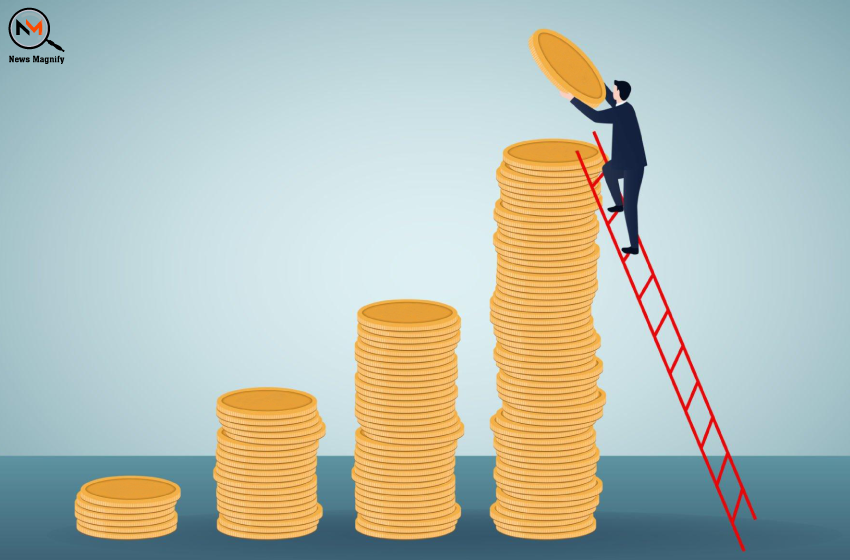
Interest Rate Increase: How Much To Invest For High Returns?
- Business Investing
 Sahil Patil
Sahil Patil- January 28, 2023
- 0
- 8 minutes read
The markets are still struggling with the deep red. This is prompting several investors to save a part of their earnings to the most famous traditional scheme, Fixed Deposit or FD. banks have recently declared their interest rate increase. With some banks offering record-high interest rates.
Banks such as the Bank of Baroda (BOB) and Punjab National Bank (PNB) have declared their interest rate increase on their fixed deposit schemes. It is in practice with effect from the 26th of December 2022 and the 1st of January 2023 respectively. Money deposited from one year to 665 days will earn 6.75%.
In contrast, term deposits for 666 days will still offer the same interest rate, 7.25%, which is still higher than the interest rates previously offered. Any FD beyond three years, however, will only earn 6.5% annually. The Bank of Baroda offers 6.75% interest on one-year term deposits.
For more tips and tricks on investments, make sure to check out
For FD investments ranging from one week to ten years, some small finance banks, like Unity Small Finance Bank, offer senior citizens as high as 9%. For the same tenure, other retail investors can earn 8.50% interest following the new interest rate increase. In a similar manner, Suryoday Small Finance Bank offers fixed deposits with maturities ranging from a week to 10 years at interest rates ranging from 4.00% to 8.51% for the general public and 4.50% to 9.05% for senior citizens.
Ladder7 Wealth Planners’ MD and Principal Officer, Suresh Sadagopan stated,
“The amount in debt or equity instruments is actually a strategic asset allocation based on risk versus reward, tenure & liquidity needs, taxation, income generation needs, etc. How much to invest in FD in a rising market is a tactical call. Interest rates are expected to rise a bit more, but we are nearing the top. In such a scenario, one can lock in medium to long-term deposits (or specific tenures that offer the best rates, like say 660 days) that offer good rates. However, the FD interest is treated as income and is taxable which brings down the post-tax returns. One needs to see if that makes sense or else, target maturity funds of suitable duration may be a better choice.”
The variations in the interest rates after the interest rate increase in banks and other financial institutions are mostly dependent on the tenure of investment. For instance, Bajaj Finance Limited currently offers 7.85% interest on a bare minimum investment of ₹15,000 for three years and eight months straight. In contrast, it is offering 7.70% interest if you are investing the same amount for two years and nine months.
Axis Bank offers 7.26% interest on deposits of a minimum of ₹5,000 for two years, but only 7.10% interest on deposits of one year and 25 days, and 7% on deposits of three and five years.
Pessimistic investors are concerned about the current trend in market movements. Multiple corrections have taken place in the markets in 2022. It wasn’t a good start to the new year either.
A SEBI-Registered Investment Advisor and Founder of Stable Investor, Dev Ashish stated regarding how much investment should be done and for how long after the interest rate increase,
“There is nothing right or wrong when it comes to deciding the percentage of the total portfolio that should be parked in FDs. But for the money that is to be invested for the next up to one to five years, one can consider parking that money in FDs. But given the investor-unfriendly taxation of fixed deposits (taxed as per tax slabs), it is advisable to not park a lot of funds in fixed deposits. Better to look at debt funds which offer reasonable but better post-tax returns if held for more than three years due to indexation benefits.”
He further added,
“There is nothing right or wrong when it comes to deciding the percentage of the total portfolio that should be parked in FDs. But for the money that is to be invested for the next up to one to five years, one can consider parking that money in FDs. But given the investor-unfriendly taxation of fixed deposits (taxed as per tax slabs), it is advisable to not park a lot of funds in fixed deposits. Better to look at debt funds which offer reasonable but better post-tax returns if held for more than three years due to indexation benefits.”
Investing in FDs is not a new or novel idea. Investors’ financial portfolios have always included these traditional deposits. When investing, investors should consider a variety of aspects before making a decision.
Thanks for taking the time to read the whole story. If you find this worthy, share it with others. Also, let us know what you think of this. For more business news today and updates on investing tips, visit the Investing section under the Business category on the News Magnify homepage. You can also follow us on Facebook, Instagram, or Twitter. Additionally, stay connected with India news online via our Telegram Channel.

